Personal Development and Professional Development
Task 1: Theories of personal and professional development
Multiple concepts and theories attempt to explain personal and professional development. With these concepts, individuals can be able to diagnose their own personality traits and skills which can help in formulating their own career and growth development plans.
The first category tries to bring forward the philosophies and the ideas of the whole self and the factors that surround these principles that define personal development.

As McLeod (2007) notes, Maslow’s hierarchy of needs is one of these theories that attempt to build on the premise that more pressing physical and emotional needs to be met first in the personal and professional development
These needs are the basis for more psychological needs of gaining knowledge, skills and experience that plays a critical role in the self-actualization process (Mcleod 2018). Maslow’s theory puts that personal development and growth in the professional field is reinforced by the desire to gain the knowledge required for progress. In another theory, Carl Rogers (Smith and Vetter 1991) builds on self-concept that overlaps Marlow’s idea’s somewhat. Rogers theory states that self-concept is built of aspects of self-worth with the idea that there are strengths and talents to individuals who acknowledge themselves. Carl Roger’s concepts relate to developments around self-esteem and self-image of what the person thinks and sees about themselves today and how they would want to be like in the future. The theory focuses on personal growth by examining oneself and actualizing what needs to be improved for the future.
By having these areas development, a person can grow as it gives a wholesome view at the current level of skills possessed and the desired skills or talents which are required for future development or progression. With such knowledge of self-actualization, an individual knows the skills to build upon in the process os learning.
Reinforcing similar assertions, Fry and Kolb (1979) propose a view that people tend to progress through a recurring pattern of learning in a cycle which would agree with this holistic view of development.
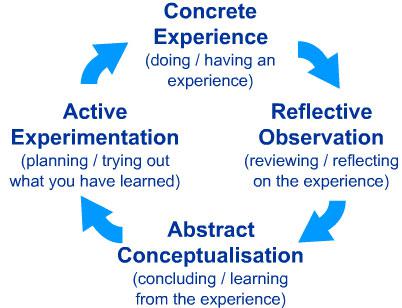
The researcher’s concepts and theory on learning processes reflect that we cycle through different systems of learning that often reflect back in development. It does so by allowing reflection and improving each cycle to build upon the skills that had already been acquired by the person.
When a person is struggling to develop a particular skill, they may go through this cycle numerous times before the required skills are acquired. Therefore, Kolb’s and Fry’s theory portrays the learning process as a continuous system that provides skills and knowledge to a person gradually.
My Employment Role (Customer Service Officer), My Responsibilities and Particular Skills and Competencies I Possess to Perform This Role.
My current job role is a senior call centre agent in a team of 15 staff for a non-profit housing assistant dealing with inquiries with phone, email and digital media. I have several responsibilities that each require their own skills and competencies
| Responsibilities | Skills | Competencies |
| Responding to inquiries from customers through a variety of channels including email, phone and social media.
|
IT skills, interpersonal skills and Logical skills | · Customer services skills
· Knowledge of the organisation and departments to direct the inquiry
· Knowledge of the current organisational systems to obtain an inquiry
· Knowledge of social media to respond to requests
|
| Train new members of our team and give appropriate training required to other teams. | IT Skills, Interpersonal Skills and verbal skills | · Knowledge of the systems and processes required to teach
· The ability to verbal be confident one on one or to a group to give adequate training
· The ability to connect the with interact well with the trainees to ensure training goes successfully
|
| To support our complaints team at a busy time and be on hand where possible to give guidance and assistance when required.
|
Interpersonal, Verbal and logical | · Deal with the external customers, so verbal communication to deal with customers well.
· Logical thinking to critically diagnose a complaint and look for the cause of the problem.
· Interpersonal still to deal with other staff members who may know fact into these complaints
|
| To complete admin tasks such as manage and update our teams’ weekly task, lunch and the absence/holiday rota.
|
Interpersonal skills and Logical skills | · Interpersonal skills to organisation between a large team’s requests which often overlap and cause upset.
· Logical skills to cover emergency leave and gaps in staffing that can cause issues with the day-to-day running of the team.
|
My Current Personal Performance Objectives and How These Are Set and Monitored as Part of An Appraisal System.
I have several goals that I wish to achieve which include:
- To learn other languages to extend by customer assistance services and developing around my hobbies which encompass sewing and dressmaking skills. Specifically, I would like to learn Dutch and Spanish as our organisation’s customers also come from these regions.
- To work on my own personality skills and focus on myself though improved timekeeping and improving my organisational skills which will fit into my timekeeping/planning. I will develop my own timetable as guidance for my personal time management as a CSO.
- To become a teacher, counsellor or trainer. My professional ambition is built around transferring my skills to others and helping the community. I could not figure out a better role other than teaching, counselling or training others. As explained by Fry’s and Kolb’s, I would love to engage myself in a cycle for learning until I achieve these dreams.
- As a way of monitoring these personal and professional development objects, I plan to use a schedule, preferably an app that will allow me to keep track of all of my goals. I have had issues previously with keeping track of these goals, but with an app, I will be able to manage my time seamlessly. Also, I will have to find a mentor who will see me through the learning process and provide me with the necessary skills to achieve my personal goals.
I will monitor closely newly acquired skills as part of my professional performance, and this will help me to track my goals and be able to adapt to new environments and conditions during my growth.
My Employer’s Organisational Objectives and How These Relate to Your Own Performance Objectives
My organisation's overall objectives are to provide unparalleled service to its clients by following a lean process of increasing surplus income by investing in housing stock and lowering business running costs through a variety of ways and to increase customer satisfaction.
Our team follows stipulated organisational policies and ethical standards to ensure that customers get their desired products at the appropriate time. In my personal perspective and role in the organisation, I work hard to ensure that I handle all customer queries on time.
Another objective of the organisation is to grow new talents and retrain existing employees to ensure that they are apt for delivering quality service. This reflects my personal goals which are to grow through frequent training that would enable me to become a trainer. Training recruits and subordinates will give me invaluable experience. Teaching people from diverse sociocultural backgrounds and learning skills and cues of keeping my trainees engaged and learning is vital in personal growth and development.
While training and teaching others, I will be able to foster the organisation's objectives while also leveraging experiential growth in my line of career. The process enhances my interpersonal and transferable skills as discussed below.
Task 2: Interpersonal and Transferable Skills
As Gardner (1987) argues, one of the concepts of intelligence is emotional intelligence (EQ), a concept that is fundamental in understanding the relationship between people in a particular environment. Interpersonal skills according to the author are those skills that enable an individual to communicate and collaborate with other team members. These are essential behaviours, traits and qualities that allow one to interact coherently with all and sundry. These skills can also be described using the theory of social intelligence where one pays attention to the culture, environment and nature of the conversation and adjusts to fit the audience’s environment. Bridges (1993) identifies that transferable skills constitute of aptitude and knowledge, typically acquired over time through experience, which can be applied in many facets of life. A thin line exists between interpersonal and transferable skills as both skills are characterized by proper communication, timeliness, leadership, empathy, problem-solving, multi-tasking and ability to internalize and actualise constructive feedback.
I deliver the communication process to my colleagues, to my administrators and to the customers. Daily communication processes revolve around these parties. Formal communication is the preferred method of delivering the message in the office as it helps send direct information that can be easily interpreted professionally. I use computer software and conventional communication equipment to reach out to other departments and customers. Within my office space, I prefer verbal communication to build friendliness, enhance teamwork and assert the importance of the message.
In my organization I demonstrate interpersonal skills in daily practice as I have built a team that is cohesive and collaborative. I augment my problem-solving ability with empathy and proper communication to provide solutions to customers. I handle several queries a day, and it is my responsibility that every client receives the right feedback in time.
In the contact centre, time is of great essence. I always manage my time by using sticker notes, reminders, alarms and calendars to ensure that I adhere to the schedule. I also solve cases depending on priority. For instance, security issues will be handled first as compared to other queries in the queue.
Task 3: Dynamics of Working with Others
Theories explaining teamwork include the joint intentions theory, joint responsibility model and shared-plans theory (Tambe and Zhang 1998).The joint intentions theory illustrates how two individuals develop a shared focus by alerting one another through pointing, eye-gazing and verbal communication. Joint responsibility is whereby one partner agrees to offer the other partner services for free. With this concept, it means that each partner is liable to the full amount of obligation. The shared-plans theory emerges from interconnect rationality and functionality. Tuckman’s teamwork theory sums up the dynamics of working with others by presenting a group development model that involves forming, storming, norming and performing. Tuckman (2010) recognizes that teams have to grow to reach their full functionality and potential.
I work with others in the organisation by communicating tasks and delegating duties accordingly. The contact centre has a strategic plan that it develops through various teams. I ensure that each team meets its weekly goals. We work together with other departments to help offer specialized support to the customers. I also collaborate with the administration to air elements infracted from the customer’s queries. I have to be flexible to be able to deal with the various groups always providing solutions and supporting teams achieve their objectives in time.
Teams in the contact centre where I work are built using the Tuckman’s model where forming involves integrating players together and defining individual roles in the team. Storming is whereby the team brainstorm on ideas on how to plan and lead a project. Norming in my organisation involves normalising the results of various groups and integrating them achieve the desired result. Performing is allowing teams to use their capacities to undertake tasks that are going to bolster customer request handling. Some of the teams include in-house team, virtual assistants team and strategic planning team.
Task 4: Developing Strategies for Problem-Solving
Theories of problem-solving are dominated by the work of psychologists Simon and Newell (1971) where they present problem-solving as an information processing paradigm. The due highlights the concepts underpinning problem-solving approaches through ‘means-ends-analysis’ and properly defining the problem space. The framework postulated by the psychologists involve the creation of sub-goals and using heuristic techniques to achieve these goals. Ohlsson (1984) brings forth the Gestalt theory of problem-solving where the focus is put on the relationship between various factors that causes the problem. Gestalt psychologists recognize that the concept of restructuring as a new way of thinking but the concept has not been integrated to the Simon and Newell’s information processing theory. While various concepts in the Gestalt’s approach may be overstated, it is unequivocal that a unified theory of thinking is necessary for restructuring thoughts for the development of pragmatic problem-solving approaches. Simon and Newell (1971) note that problem-solving is a group of cognitive processes dedicated to change the state of a given state to the desired state where the solution to the procedure is not clear. Problem-solving involves using permissible approaches to achieve the desired final state with the help of a defined framework. Ostensibly, problem-solving is associated with many theories and concepts around cognition and creativity. The ability to come up with solutions during crises is one of the hallmarks of information processing (cognition) paradigm brought forward by Simon and Newell. The psychologists came up with a popular problem-solving instrument identified as the General Problem Solver (GPS) and the utilization of means-ends analysis.
As a senior customer solutions officer, recently I have faced a significant problem in regard to the call queue time. Customers are held in the queue for more than five minutes which should not be the case because it creates dissatisfaction and prompts negative feedback against the organisation. Long call queues discourage clients and about 50 percent of them usually drop calls with only 20 percent requesting call back.
In our organisation, all managers and teams use the concepts of Simon and Newell in our problem-solving approach. Particularly, I follow a four-tiered approach which comprises of problem definition, generation of alternatives, evaluation of the alternatives, creation of the solutions and implementation of solutions. In defining the problem of call queues, I specified the problem by noting how the system should function in an ideal situation. By doing so, I noticed that the inefficient call handling process was creating bottlenecks in service delivery and costing the organisation time and resources in tracking back customers. Problem definition in our organization involves stating the whys, whats, and hows of the problem.
I identified solutions for the problem of long call queues by framing the problem is in a way that is relevant to the resources of the organisation. As such, I was able to generate multiple solutions and analyse each of the solutions one-by-one. Analysis of the solutions focussed on their effectiveness, appropriateness and sub-goals. Through the analysis process, I was able to come up with a solution that made the call handling process seamless, flawless and efficient.
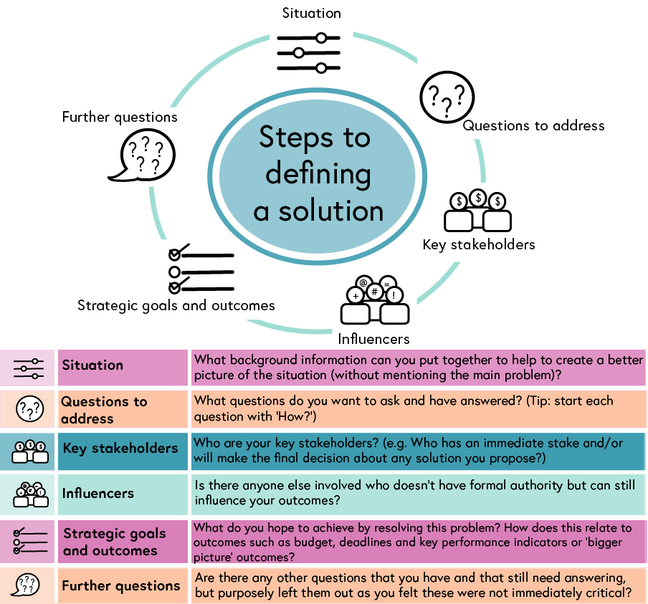
I used the 5 Whys method to solve the problem. I chose this tool because it traces the problem to its roots enabling the creation of solutions that can solve the problem in the long-term. The method can be used to assess and brings solutions to a problem. It is suitable for solving moderate and straightforward problems of which in my case, the problem was moderate as it just affected one department of the organisation. The system involved assembling the contact centre team and asking the first question why is why there were long call centre queues. The next section develops around the first question with an eye on defining, measuring, analysing, improving and controlling the situation.
The fishbone diagram or the cause and effect diagram demonstrate relationships between potential causes of a problem. The method is suitable for analysing both simple and complex problems that run across various departments. Below is a fishbone diagram that could help in finding the right solution for long call queues.
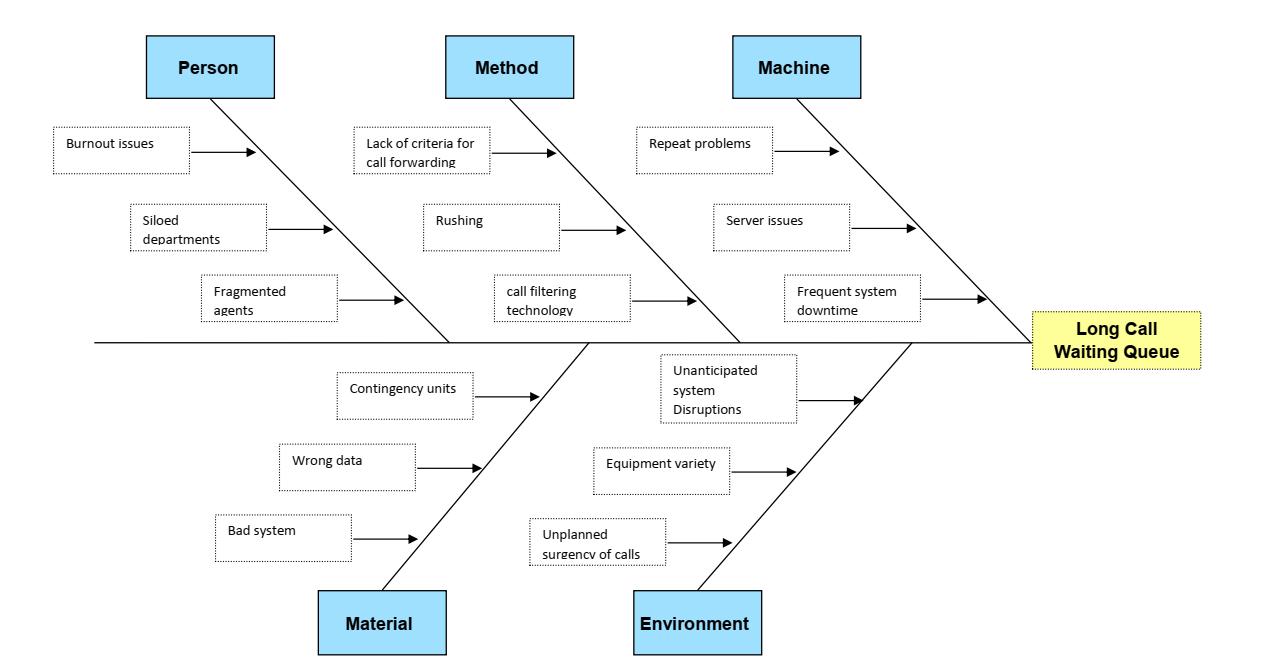
Figure 1: Fishbone Diagram
The solutions the team put forward was implemented by following the process described by Zmud and Cox (1979) where the entire process involves planning, measuring, evaluation and execution. I developed a solution that took a multi-faceted approach that includes automated call transfers to correct departments, designating inbound and outbound call team, and expanding customer query handling platforms. Planning mainly involved prioritizing processes and assigning resources to enable implementation of the plan. Measuring process is defining the extent of application of the approved plans while evaluation is testing the process before execution.
I evaluated the effectiveness of the solutions by running a demo. As we run the demo, we determined areas that needed to take off and those that required additions. The evaluation process also involved setting an upgradable system and self-troubleshooting system that enabled the system to detect problems. The new call centre system also included an analytics and reporting system that enables the contact centre team to estimate the times of possible call surgency.
Task 5: Communication Skills
Baldwin et al. (2004) define communication as the process of creation, sustenance and management of interactions and meaning. Communication according to the author is composed of the message, the speaker, the listener and rationality. As Berger (1991) asserts, communication theory attempts to describe the production, transmission and conveyance of information as well as how meaning is created and shared. The psychologist points out the communication theories can take many dimensions ranging from organizational, message processing, message production to axioms defining interactive processes. Communication can be achieved through oral or written means, and there is always a target audience as in the case of mass communication theory. In social exchange, penetration and social learning theory, several concepts of communication such as interviewing and meetings are described as part of communication. In a broader perspective, these theories and concepts can be expressed as structural and functional as well as cognitive and behavioural theories.
Communication is comprehensive and covers various aspects. Therefore, communication theories may not define all aspects regarding real-life interaction processes succinctly. In my workplace, communication can be considered as formal or informal. Often, we interact and carry out discourses informally when chatting with colleagues, but when undertaking interviews and meetings, conversations are kept formal. Interactions with the customers follow an organizational communication theory approach where empathy underpins the meaning of the message. I find communication theories abstractions that put forward concepts that can be used to understanding conversation and interaction processes in an organization.
I learned various concepts especially about the reduction and deduction theories where I identified that communicators’ failure to use deliver the message clearly through proper encoding techniques could lead to misinterpretations leading to distortion of facts. As CSO, I will ensure I use proper channels and systems to encode my messages so that it reaches the audience as intended. I learned that communication processes are never complete without feedback. Therefore, I will include a feedback mechanism in all my messages to subordinates, administration and customers to know their side of the story. I also derived essential knowledge about dissemination of information which involves understanding the audience and its needs.
Task 6: Learning Styles
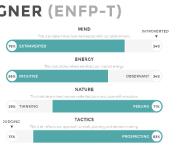
The Myers Briggs personality test is a concept in which a personality is broken down to include several key features of how a person operates and what talents they may have (Varvel et al. 2004).
Personality test encourages personal and professional development as it draws people to their area of expertise which enables them to develop and specialize per their strengths. Moreover, it enables people to learn their mistakes and grow by correcting them.
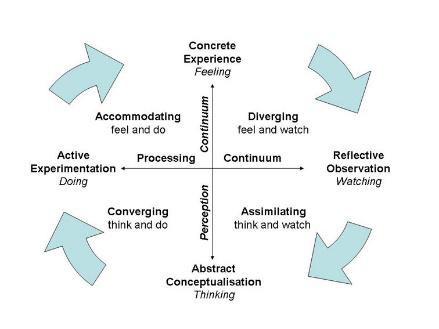
Whereas the Myers test looks at aspects of the personalities which remains relatively unchanged, Honey and Mumford (1989) built upon Kolb's concept by supporting the cyclical theory which states that personalities are not static as they change through time-based on behavioural, cognitive and environmental exposures.
As Kolb (2005) states, people will usually develop a preference that they will sometimes change back to progress depending on the preference of the situation at hand in relation to their personal and professional development interests.
On the other hand, a YouTube video 8 Intelligences - Theory of Multiple Intelligences Explained - Dr.Howard Gardner (2016) identifies that the Gardener’s theory of multiple intelligence takes a different view that multiple intelligences are strengths that people may not always acknowledge as a type of intelligence and these include: Traditional logical intelligence, Verbal/linguistic, Interpersonal, Body/Kinaesthetic, Musical, Visual/ spatial, Intrapersonal and Naturalist. With all these various types of intelligence, it would be extremely beneficial to people to identify which type of intelligence they are talented on and which would require attention to develop in order to progress. This concept of types of intelligence may be reflected back with personality and wholistic views that are mentioned above which will genuinely aid in skill development.
Bibliography
8 Intelligences - Theory of Multiple Intelligences Explained - Dr. Howard Gardner, 2016. Available from: https://www.youtube.com/watch?v=s2EdujrM0vA&feature=youtu.be [Accessed 2 Apr 2019].
Baldwin, J. R., Perry, S. D., and Moffitt, M. A., 2004. Communication theories for everyday life. Pearson/Allyn and Bacon.
Berger, C. R., 1991. Communication theories and other curios. Communications Monographs, 58 (1), 101–113.
Bridges, D., 1993. Transferable skills: a philosophical perspective. Studies in Higher Education, 18 (1), 43–51.
Fry, R. and Kolb, D., 1979. Experiential learning theory and learning experiences in liberal arts education. New directions for experiential learning, 6, 79.
Gardner, H., 1987. The theory of multiple intelligences. Annals of dyslexia, 37 (1), 19–35.
Honey, P. and Mumford, A., 1989. Learning styles questionnaire. Organization Design and Development, Incorporated.
Kolb, A. Y., 2005. The Kolb learning style inventory–version 3.1 2005 technical specifications. Boston, MA: Hay Resource Direct, 200, 72.
McLeod, S., 2007. Maslow’s hierarchy of needs. Simply psychology, 1.
Mcleod, S., 2018. Maslow’s Hierarchy of Needs [online]. Simply Psychology. Available from: https://www.simplypsychology.org/maslow.html [Accessed 2 Apr 2019].
Ohlsson, S., 1984. Restructuring revisited: I. Summary and critique of the Gestalt theory of problem-solving. Scandinavian Journal of Psychology, 25 (1), 65–78.
Simon, H. A. and Newell, A., 1971. Human problem solving: The state of the theory in 1970. American Psychologist, 26 (2), 145.
Smith, B. D. and Vetter, H. J., 1991. Theories of personality, 2nd ed. Englewood Cliffs, NJ, US: Prentice-Hall, Inc.
Tambe, M. and Zhang, W., 1998. Towards flexible teamwork in persistent teams. In: . Presented at the Proceedings International Conference on Multi Agent Systems (Cat. No. 98EX160), IEEE, 277–284.
Tuckman’s, B., 2010. FORMING, STORMING, NORMING & PERFORMING TEAM DEVELOPMENT MODEL.
Varvel, T., Adams, S. G., Pridie, S. J., and Ruiz Ulloa, B. C., 2004. Team effectiveness and individual Myers-Briggs personality dimensions. Journal of management in Engineering, 20 (4), 141–146.
Zmud, R. W. and Cox, J. F., 1979. The Implementation Process: A Change Approach. MIS Quarterly, 3 (2), 35–43.
Appendix
| Transferable Skill | Work Experience | Academic Project | Extra-curricular Activities | |
| Personal Development | ||||
| Assertiveness | Dealing with customers Queries and complaints. | Ensuring I understand the subject and being assertive in asking for further information. | When Playing Rugby being assertive in my position and playing well. | |
| Self-Development | Training to look at the progression in work. | Building my own skills for future career | Working on extra qualifications at church and fitness through rugby | |
| Survival | Social Skills I am able to discuss and communicate effectively | Working life balance has had to be balanced and university being flexible helps that | I am a first aider at church with training in adult and child first age. | |
| Interpersonal | ||||
| Interactive | Dealing with customer queries on a daily bases | Working on a project with other students | Teaching lessons at church | |
| Teamwork | Working cooperatively with my team to resolve the issue quickly | Making up a study session with other students to work on assignments | Working closely with my rugby team in training to improve our team | |
| Leadership | Being a senior CSO, so I train new staff as they start the role | Taking the lead on discussions in class | Being the young women’s president at church and overseeing all the girls | |
| Communication | ||||
| Visual and Aural | Watching someone show me how to use a new piece of equipment and doing it my self | Working on graphs for my assignments | Showing and talking about pictures as a reference guide for team tactics at rugby | |
| Written | Sending out letters to customers over issues | Writing my assignments in academic writing | Writing up lessons plan for teaching at church | |
| Verbal | Talking to customers in person or given presentations over new specialist software we use in our department | We discuss in class and at break among ourselves about assignment, but other things tech related as each has a passion for it. | We have discussion groups with different topics over different issues at church youth night and classes
|
|
| Technical | ||||
| Numerical | I use this skill at work to work with accounts to deal with problem rent accounts | We use numerical issue frequently in assignments and other areas as it tights into our course closely | We need to use numerical to deal with our budgets at church to ensure we have enough budget for the year | |
| Computing | I use specific software and create customer spreadsheets when there are issues with a customers rent account | Within university, I have had to use specialist software for my dyslexia and learned to negotiate this | I have to use the internet to procure resources off the internet to teach and modified them on my tablet | |
| Technical / Creative | I have had to learn a lot of technical words and speech to diagnose repairs for customers | I appreciate to the opportunity to be creative in my assignments with diagrams and interactively | I am currently learning to drive a manual car | |
| Intellectual | ||||
| Problem Solving | I analyse and diagnose issues with repairs for the customer and have to probe for further information to diagnose properly | I have had to think critically and reflect back on my work at university to ensure the correct information is making it into my assignment and the correct references | I work off my own initiative to plan and teach a lesson- organize the schedule for the month as there is no one to oversee myself as I am the leader of the area | |
| SKILL | TYPICAL DESCRIPTORS | SKILL LEVEL Low High | SPECIFIC COMMENTS |
| Organisation and time management | Prioritising, dealing with paperwork; interruptions; planning your day | 1 2 3 4 5 | I am usually organised in the work place, but I need to improve planning my university work and my personal time. |
| Decision making and problem-solving | Ability to make decisions; selecting suitable solutions; analysis of the appropriateness | 1 2 3 4 5 | I am usually able to analyse what I believe to be the best decision but could work on my critical thinking more. |
| Planning | Leading teams; consulting team members; task allocation; objective setting. | 1 2 3 4 5 | I am training to lead my team as a more senior role but as this is new it is something, I am working on similar in my personal life at church |
| Delegation | Matching tasks to staff; providing guidance and advice; maintaining staff motivation and focus. | 1 2 3 4 5 | A delegate is not something I feel I struggle with I would consider this one of my strong points |
| Motivation | Applying motivational techniques; understanding individual motives; making tasks challenging; encouraging creativity; providing team support; engendering trust and openness. | 1 2 3 4 5 | I believe I have a strong motivation to get things done and to improve upon them once they are |
| Coaching | Providing guidance; listening skills; ability to draw out information; reinforcing behaviour using feedback; negotiating; planning goals and objectives. | 1 2 3 4 5 | I would say this is something I am capable in, but I am working on improving these skills through my role at work by training and learning to listen more closely |
| Target setting | Understanding and communicating organisational objectives; use of SMART objectives to achieve targets | 1 2 3 4 5 | I am able to set smart targets and understand them thoroughly. I understand our organisation's objectives. |
| Interpersonal skills | Relating to others; building rapport and positive relationships; being sensitive to people’s needs; using influencing and persuasive skills to help others improve the performance or overcome problems; listening effectively and providing feedback; being assertive; use of body language. | 1 2 3 4 5 | I have a keen understanding of interpersonal skills and it is one of my strengths as I am now a senior mentor for my team, so part of my role is dealing with interpersonal issues among college and in my personal life at church, I uses this as mentor to the young women to help them with personal issues. |
| Written communications | Structure and format of letters, memos, e-mails, reports | 1 2 3 4 5 | I am proficient with written communications in both my work life and personal life. One of the only challenges I have is due to my dyslexia, but this can be managed by the help of software and support. |
| Oral communications | Structure and format: techniques for effective presentations; using the telephone; meetings. | 1 2 3 4 5 | I use oral communication on a daily bases in my professional roles in all form from dealing with customer to giving meeting and teaching lessons at church to speaking in front of a large group of people. |

Leave a Reply